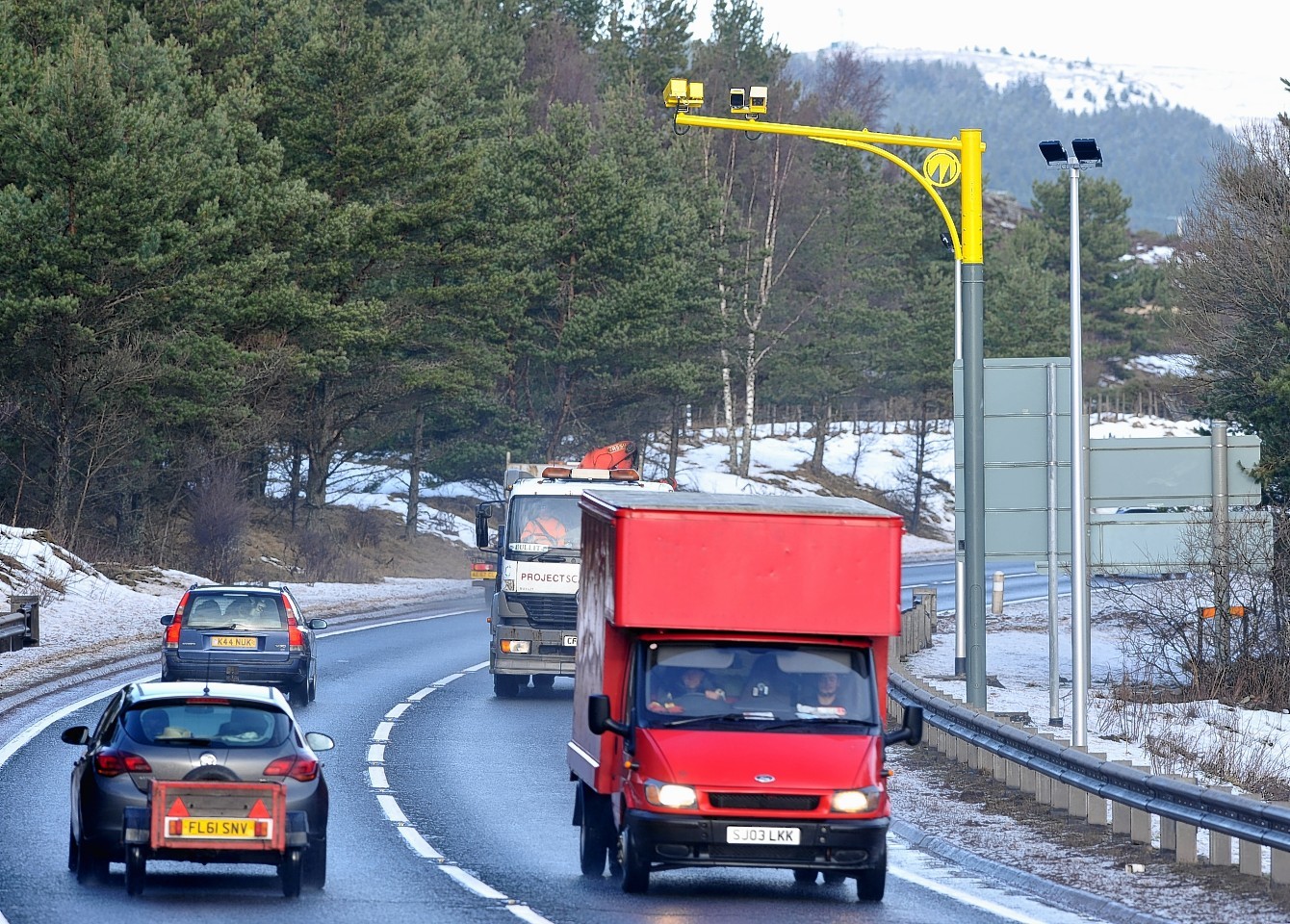New research has shown that controversial average speed cameras on the A9 are improving driver behaviour and cutting speed on the notorious Highland route.
The survey results have revealed a reduction in “road rage” incidents and fewer dangerous overtaking manoeuvres on the Inverness-Perth route.
But sceptical campaigners last night said the real test for the devices would come during the peak of the busy summer tourist season.
And the majority of motorists polled said they still want the trunk road to be dualled.
The devices went live on the A9 between Inverness and Dunblane in October last year, as part of efforts to cut fatal and serious accidents.
The survey, carried out on behalf of Transport Scotland, suggests that incidents of frustration have been cut.
The research, conducted by Aecom, follows a survey last year into driver attitudes and behaviour before the cameras were switched on.
Around 300 people who use the A9 were questioned.
A total of 75% of respondents – 225 people – said they have “never” exceed the limit by more than 15mph after the cameras were installed, compared with 43% – or 129 -before.
The Aecom report states: “The result indicate that the presence of ASCs (average speed cameras) may have had the effect of positively increasing the perception of speed limit enforcement more generally, which means that the system could have an effect beyond the A9.”
It adds: “It would be difficult to argue that since the introduction of ASCs, there has not been a positive change in the behaviour of drivers and how safe they feel while travelling along the road even if it is difficult to ascertain whether this is down to the presence of ASCs, other factors or a mixture of both.”
The Aecom research echoes the results of a Press and Journal survey last month, which revealed that more than half of motorists using the A9 believed the cameras have improved driver behaviour.
Stewart Leggett, chairman of the A9 Safety Group said: “The A9 road user survey has tried to gauge the effect the recent road safety measures may have had on drivers’ perceptions of safety and driving experience.
“Coupled with the early performance data published in January this year, we can see a positive impact on driver behaviour but we know more can be done.
“Average speed cameras have always been about encouraging improved driver behaviour, and so far we are seeing a step in the right direction.
“Speeding is only one behaviour and the A9 Safety Group will be running further education campaigns on safer overtaking as well as working with freight and haulage industry to address issues such as ‘tailgating’ and ‘elephant racing’.”
But Mike Burns, who leads the A9 Average Speed Cameras Are Not the Answer campaign, said traffic will more than double in the summer months when visitors flock to the region.
He said: “There are around 7,000 vehicles on the road in winter but that goes up to 13,000 in summer.
“That is when the real test of the cameras will be.”
He added: “The evidence from the survey is not what we are being told by members of our group.
“Other campaign groups are also getting the opposite information (to the survey) from their members.
“These results do not reflect what is happening on the A9.”
Mr Burns also claimed that accident rates had gone up since the cameras were introduced.
He said: “The key performance indicator was for the cameras to reduce deaths yet there have been a number of fatal accidents on the road since they were introduced.”
Four men have been killed on the A9 between Inverness and Perth since November, although there has been no suggestion that the cameras were a factor in any of the crashes.
